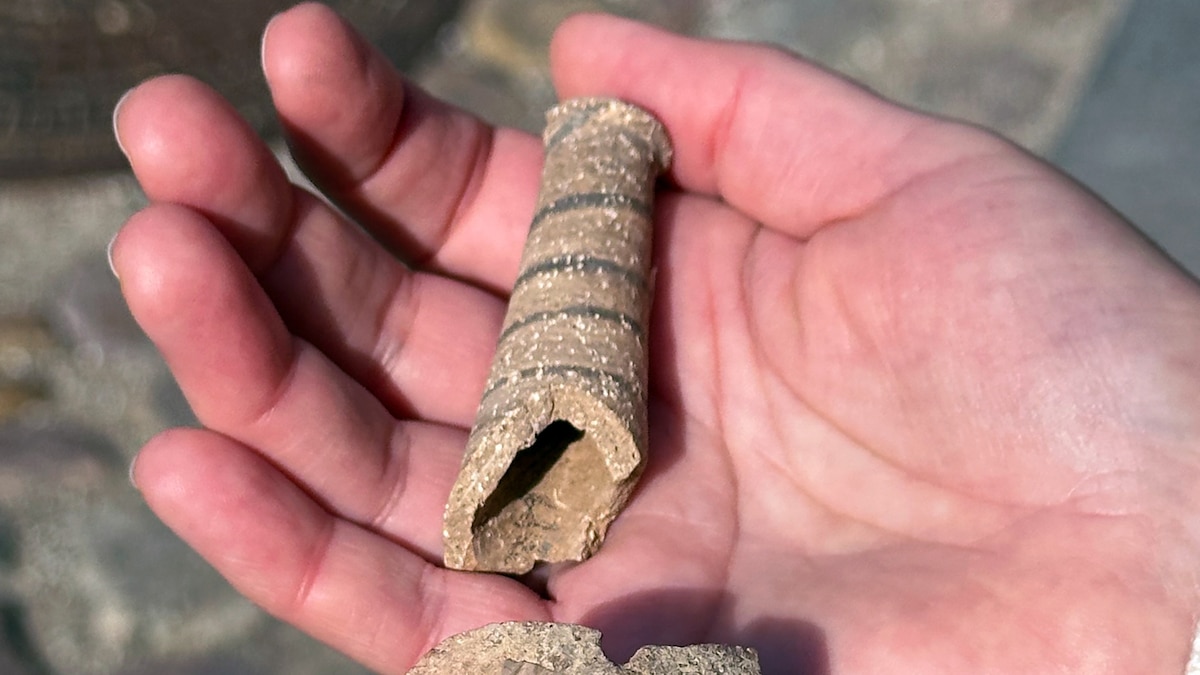Now Reading: These 4,500-year-old rattles may be among the world’s oldest toys
-
01
These 4,500-year-old rattles may be among the world’s oldest toys
These 4,500-year-old rattles may be among the world’s oldest toys

Clay rattles made in Syria about 4,500 years ago were designed to “amuse and calm” infants, according to a new study. But some archaeologists think they were used in rituals to dispel evil spirits, or that they might have served both purposes.
“They have little handles that are too small for me, and I have quite small hands,” says archaeologist Mette Marie Hald from the National Museum of Denmark in Copenhagen. “They are for infants or toddlers.”
In the new study published in the journal Childhood in the Past, Hald and her co-authors describe artifacts kept by the museum after excavations of an ancient mound in Hama in Syria in the 1930s. The possible playthings are among the oldest toys in the archaeological record.
(Who made these unusual ancient ‘puppets’—and left them atop a pyramid?)
Early excavations
Many of the artifacts ended up in museums throughout the Middle East, including Syria’s National Museum of Damascus. But the expedition members took some back to Denmark, where they were placed in storage until Hald and her colleagues re-examined them.
The new analysis has established that at least 21 of the clay fragments come from rattles made between about 4,500 and 4,000 years ago, during the Early Bronze Age, when Hama was one of several ancient city-states in the region.
Hald says part of one rattle had been misidentified as a “sieve” because it contained holes; and the hollow handle of another was mislabeled as “piping.”

Examples of handles and bodies from the Hama rattle assemblage are superimposed over the outline of a complete rattle from another site in Syria called Al-Zalaqiyat.
Photoillustration by G. Mouamar, the National Museum of Denmark
Bronze Age rattles or wards against evil?
The analysis shows the fragments are almost identical in style and size to an unbroken rattle found at an ancient cemetery a few miles north of Hama, named Al-Zalaqiyat, and to rattles from other Early Bronze Age sites now held at the museum in Damascus.
Those rattles were filled with pebbles or small clay pellets, to make a noise when they were shaken—similar to some modern baby toys—and so the authors suggest they were designed for small children to play with.
Some archaeologists have proposed that the rattles were “apotropaic”—meaning the noise they made was designed to ward off evil spirits—or that they were used as musical instruments.
But the study’s lead author, archaeologist Georges Mouamar of the National Museum of Denmark and the French research agency CNRS, carried out experiments with the rattle from Al-Zalaqiyat and determined it was too small to have made much noise.
“It just made a tiny little sound,” Hald says. “It wouldn’t have been very entertaining as a musical instrument.”
The Hama fragments were also found in what had been a domestic neighborhood, rather than a temple or a burial ground; and this strengthened the idea they were used by children, Hald says.
You May Also Like
Professional wares
The analysis also determined that the Hama fragments were made from the same distinctive mix of clays as commercial pottery from the ancient city—implying the rattles were made by professional potters for sale at street markets to parents.
The Hama rattles seem well-finished, with intricate designs in pottery glaze that support the idea they were made by professionals, Hald says.
Hama was a regional center during the Early Bronze Age, and so the rattles may have been mass produced there for sale elsewhere.
Other types of rattles have been found in other parts of Syria and the Middle East—rattles shaped like animals, for example, are often found in northern Syria—and so it is likely local potters made them in locally popular styles, she says.

Fragments of 4500-year-old baby rattles match the chemical makeup of other ceramic housewares from Hama.
Photograph by John Fhær Engedal Nissen, the National Museum of Denmark
Making some noise
The new study has stirred debate among experts over whether the Hama rattles and others like them served a ritual or playful purpose.
Archaeologist Elynn Gorris of Belgium’s University of Louvain, who was not involved in the study, is concerned that the Hama rattles, while small, would have been too large and heavy for babies to hold. But she allows that they would have been suitable for toddlers.
Gorris notes that similar rattles have been found at archaeological sites in the Americas—including a similar rattle from California that may be up to 1,000 years old—where evidence indicates they were used traditionally in rituals and for making music, as they still are today.
But “this is not about wrong or right—this is an inclusive story,” she says. “These could have been used by toddlers, but that doesn’t exclude the fact that they could have been percussion instruments to keep rhythm for adults, for lullabies or for ritual songs.”
Archaeologist Kristine Garroway, a professor at Hebrew Union College-Jewish Institute of Religion in Los Angeles who has studied clay rattles from the ancient Levant, is “very convinced” by the study’s findings. But she also thinks the rattles may have had a “dual use,” first as apotropaic devices to scare evil spirits from homes and then as noisemakers to amuse small children. “These could have been used in multiple different ways,” she says.
Children in archaeology
If the rattles are toys, then they are some of the earliest that survive—other contenders include a 5000-year-old chariot from Turkey and a 4000-year-old stone head, possibly from a doll, from an Italian island.
The fact the researchers are thinking about ancient children is important, notes Garroway: “Children get overlooked in the archaeological record, [so] to even stop and think that children could have been using these objects is amazing.”
For Hald, all the evidence indicates the Hama rattles were designed to keep small children entertained. “Parents in the past loved their children, just as we do today,” she says. “But perhaps parents also needed to distract their children now and then so that they could have a bit of peace and quiet to themselves. Today, we use screens, back then it was rattles.”























